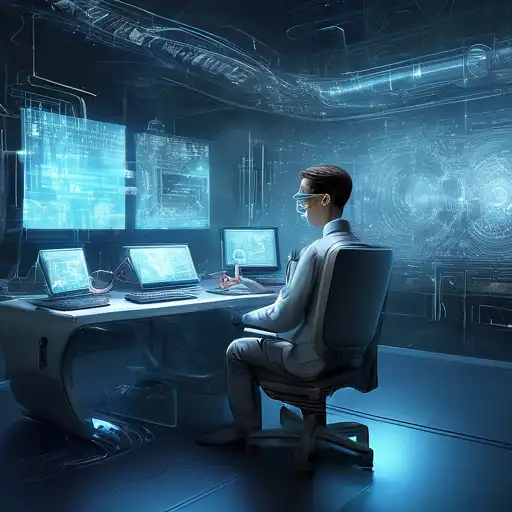Introduction to Computer Vision Technology
Computer vision technology has seen remarkable advancements in recent years, transforming how machines interpret and understand visual information. This technology, at the intersection of artificial intelligence and image processing, enables computers to identify, process, and analyze images and videos in a way that mimics human vision.
Recent Breakthroughs in Computer Vision
The field of computer vision has witnessed several groundbreaking developments. From enhanced image recognition algorithms to real-time video analysis, these advancements are paving the way for innovative applications across various industries.
Deep Learning and Neural Networks
Deep learning, particularly convolutional neural networks (CNNs), has been a game-changer for computer vision. These networks can automatically and adaptively learn spatial hierarchies of features from images, significantly improving accuracy in tasks such as object detection and facial recognition.
Real-Time Processing Capabilities
With the advent of more powerful GPUs and optimized algorithms, computer vision systems can now process and analyze video feeds in real time. This capability is crucial for applications like autonomous driving and surveillance systems.
Applications of Advanced Computer Vision
The applications of computer vision technology are vast and varied. Here are some of the most impactful uses today:
- Healthcare: From diagnosing diseases through medical imaging to assisting in surgeries, computer vision is revolutionizing healthcare.
- Retail: Automated checkout systems and inventory management are just a few ways retail is benefiting from computer vision.
- Automotive: Autonomous vehicles rely heavily on computer vision to navigate safely and efficiently.
- Security: Enhanced surveillance systems use computer vision for facial recognition and anomaly detection.
Challenges and Future Directions
Despite its advancements, computer vision technology faces challenges such as privacy concerns and the need for vast amounts of labeled data. However, ongoing research in areas like unsupervised learning and synthetic data generation promises to address these issues.
The Role of AI and Machine Learning
AI and machine learning continue to be the driving forces behind the evolution of computer vision. As these technologies advance, we can expect even more sophisticated and efficient computer vision systems.
Conclusion
The advancements in computer vision technology are not just enhancing existing applications but also opening doors to new possibilities. As we continue to explore the potential of this technology, its impact across industries is set to grow exponentially.
For more insights into the latest trends in technology, check out our technology trends section.
